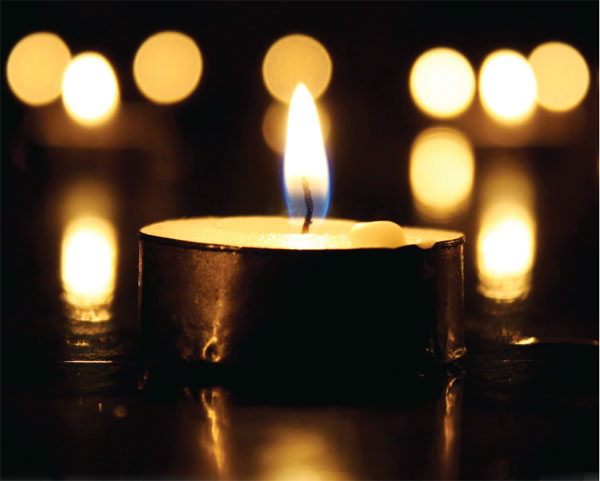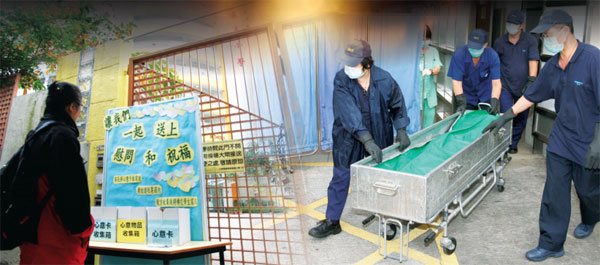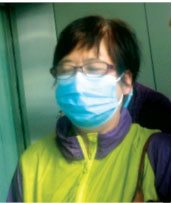Schooled to silence
Updated: 2015-08-05 08:49
(HK Edition)
|
|||||||
Nearly two years after Law Cheuk-ki jumped off her school building,
the Education Bureau is yet to review its school crisis management guidelines. Ming Yeung reports.
10-year-old girl allegedly killed herself while at school on Dec 9, 2013. The incompetent and dilatory response of the school management to her death begged for a change in the way schools handle such a crisis. The Education Bureau (EDB) is yet to review the guidelines issued to schools to pre-empt such a tragedy, but has pledged that it will do so "and make appropriate enrichment where necessary," according to its spokesman.
However, he did not mention the kind of enrichment that would be made nor was a deadline set, although nearly two years has passed since the untimely death of Law Cheuk-ki at Kwai Chung's CCC Kei Chun Primary School.
The spokesman maintained that the EDB has published an "e-Book on School Crisis Management", which aims to provide appropriate crisis-aftermath intervention to affected school personnel and students. The book, published in 2005, however, failed to come up with an effective way of handling such cases. Many feel the failure has to do with valuing a school's reputation over the wellbeing of a student in distress.
"The e-Book introduces a framework, roles and functions of the School Crisis Management Team as well as crisis intervention work and strategies, such as psycho-education, counseling and parental support. It also provides various resources and sample materials for use by schools and professionals, including school social workers and educational psychologists," claimed the spokesman.
In a chapter that helps schools deal with student suicide in the e-Book, is a flow chart that goes from verification of information, to notifying a school supervisor and regional education officer, to calling an urgent school crisis management team (CMT) meeting, to providing support to students, to preparing for media enquiries, to evaluation and follow up. Keeping a resource directory to ambulance service is also a requirement.
The 2013 student suicide has proved that the suggested method is fatally flawed. For example, while the most obvious thing for the school management to do when they discover a student has potentially-fatally injured herself would be to call an ambulance, this does not figure in the guidelines given in the e-Book.
"In case of a suicide crisis, the school should promptly activate its crisis management team to take necessary action," says a guideline on the EDB website. Still, it does not mandate the school to call for an ambulance.
Typically a CMT includes a team leader - usually the school principal - school social worker, education psychologist, representatives of teachers, and so on to perform different pre-assigned duties, should a crisis occur.
Different schools, different rules
There seems to be no uniform standard in the way the guidelines are interpreted by different schools in the city. Only school clerks are authorized to contact emergency services at PLK Fong Wong Kam Chuen Primary School. Tin Shui Wai's Chinese YMCA Primary School requires witnesses to contact school offices, relying on first aid administered by the teacher at the onset of an untoward incident before contacting emergency services.
Contacting emergency services is the sixth item on Kwun Tong's SKH Tak Tin Lee Shiu Keung Primary School's crisis management checklist. Eyewitness debriefs, school management notification, first aid and parental notification all take precedence over contacting emergency services.
Primary Five student Law Cheuk-ki was reported to have been a victim of bullying at Kwai Chung's CCC Kei Chun Primary School before apparently taking her own life, by jumping off the fifth floor of the building.
The way the incident was handled by school authorities outraged Hong Kong. The school's senior management was publicly excoriated as apathetic and heartless.
Incredibly, instead of calling 999, the emergency number, the school staff called St John Ambulance, an organization that provides 24-hour free first aid and ambulance services. The dying girl was denied proper medical attention that might have saved her life.
The call to St John Ambulance was made by a member of the school's clerical staff. Education legislator Ip Kin-yuen has questioned the move. Ip asked whether the errant call was ordered by the school's senior management or if the school authorities did not know how to deal with the injuries suffered by the girl, or if the emergency number of St John was the only one posted on the bulletin board.
"It was charged that the school's former principal had previously banned calls to 999. Had the new principal changed the instruction or just followed suit? Or everyone just continued the tradition? Whatever the reason was, the school did not call 999," Ip declared.
The inquest into the death of Law learned that the school's vice-principal Shek Ling performed cardiopulmonary resuscitation despite heavy and obvious hemorrhaging. Shek allegedly ordered staff to clean up first, before contacting emergency services.
In his findings, Coroner Ko Wai-hung slammed senior staff at CCC Kei Chun Primary School for failing to respond adequately to a life or death situation. Law's death was ruled unascertained, since there was no conclusive evidence that the girl had deliberately jumped off the building. Ko accused Shek of lying under oath after several first responders testified Law was motionless with a visibly broken leg and skull fractures. Shek had informed paramedics the girl was able to walk.
The fear of 999
The school's crisis management protocol, brought under the harsh light of public scrutiny, appeared to place the school's reputation above the health and welfare of its student. The vice-principal's priority for "cleaning up" before rendering aid to the dying girl has left an indelible stain on that reputation.
A veteran member of St John Ambulance told China Daily that it is common among primary and secondary schools to avoid calling 999, because those calls inevitably invite police scrutiny, which schools try to avoid at all costs.
In Law's case, the veteran member, who prefers to be unnamed, said calling 999 would have made no difference, because the girl died before first responders arrived.
"Calling 999 is sometimes not the most direct way to get the ambulance service they need," the St John Ambulance member conceded. The Fire Services Department (FSD) has another number which directly goes to emergency ambulance services.
However, it remains a mystery as to why the school called St John Ambulance, instead of calling FSD, the statutory provider of emergency ambulance service in Hong Kong. FSD has a current fleet of 400-plus ambulances working around the clock. St John has only three ambulances. On average, about 2,048 emergency patients were serviced by FSD ambulances every day, according to the department.
Moreover, an ambulance dispatched by FSD from the Kwai Chung Ambulance Depot, the one nearest to the school, would have arrived far quicker than the one dispatched by St John, from its station at Ho Man Tin, in Kowloon.
"If a student hurts another and the school calls the police, both the victim and bully must be investigated. Oftentimes the teacher will just accompany the victim to a hospital for treatment and then call parents of both parties for a closed-door meeting," the St John member said.
The fear of undue media attention is not new, given the media is quick to intercept ambulance dispatch calls. But this must not be a reason for not making emergency calls, Ip Kin-yuen commented, adding the news will shortly be posted on social media networks anyway.
"School principals and senior staff should prepare for media enquires when there is a crisis. Some principals, however, still choose to be ostriches," Ip noted.
The St John Ambulance member comments that the FSD's emergency medical assistants have more systematic training than St John members, a majority of whom are volunteers. Therefore, for serious cases, it is advisable to use FSD services.
In the FAQ section of the FSD website there is a question, "What should you do when you come to a person who is unconscious?" The answer is "stay calm and dial '999' for an ambulance immediately" and "stay with the patient until the ambulance personnel arrive".
Federation of PTA of Hong Kong Eastern District chairman Raymond Jao Ming says schools sometimes are unable to decide whether to inform parents first, because some parents are against calling 999. Therefore the EDB should mandate 999 calls in the event of serious incidents.
Lawmaker Ip Kin-yuen reckoned that EDB should formulate clear step-by-step guidelines to schools to handle suicides or accidents after thorough discussion with schools, and only small variations taking into account each school's condition would be allowed.
Raymond Jao hopes the school's parent-teacher committee will amend the existing guidelines in early September so that all stakeholders have a clear mandate on what they should be doing in case of an emergency.
"After the Law incident, we all hope that the guidelines can be made transparent to all stakeholders. Time has changed, so the guidelines have to be updated as well," Jao said, adding that all schools should make student safety their paramount concern.
Ip Kin-yuen agrees. "It is pathetic if other schools fail to learn from Law's tragedy. All schools should be free from the taboo of calling 999."
Contact the writer at mingyeung@chinadailyhk.com



|
Vice-principal Shek Ling at Law's school was slammed by coroner for being dishonest in her account of what had happened. |
(HK Edition 08/05/2015 page9)
